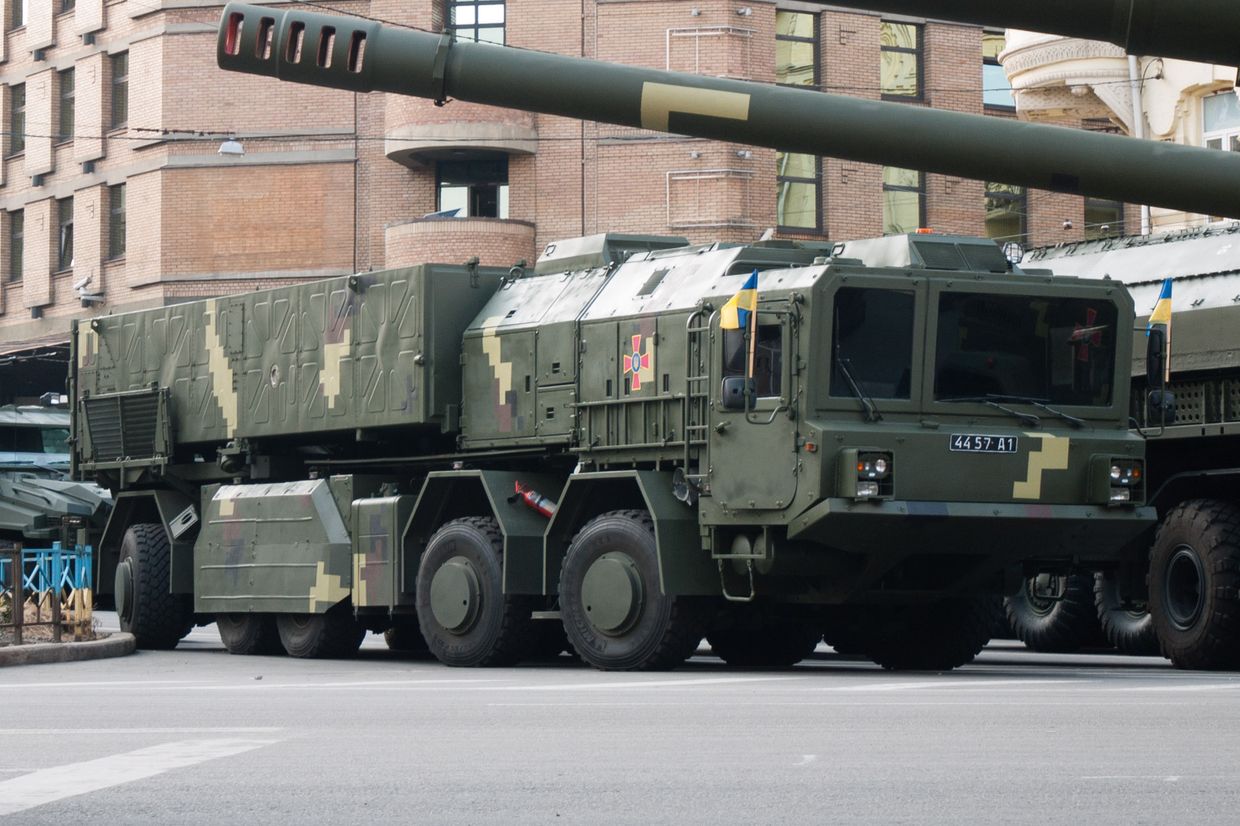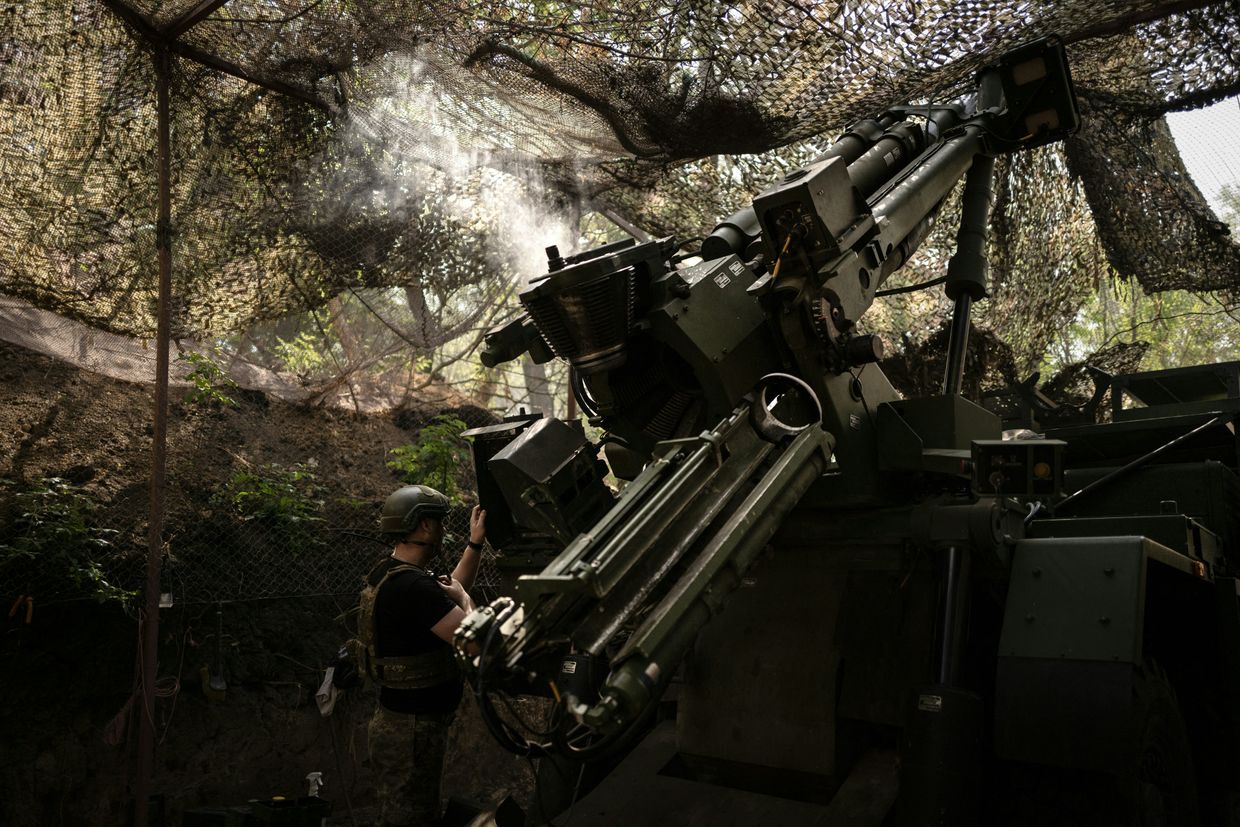Ukraine’s agricultural heartland in the south of the country is threatened with long-term decline following the destruction of the Kakhovka Hydroelectric Power Plant and dam, Ukrainian officials fear.
The destruction of the dam in the early hours of June 6, and the start of the draining of the Kakhovka Reservoir, an important water source for the region, had an immediate effect on global wheat prices, which surged by 2.4%, while prices for corn and oats increased by 1% and 0.73%, respectively.
But nearly two months after the catastrophe, it’s the long-term effects of the loss of the reservoir that most worry Ukrainian agriculture officials, experts and farmers.
The impact of the dam explosion is still being calculated more than a month after the disaster, as it is hard to estimate the amount of damage in the Russian-occupied territories due to the absence of access to agricultural lands and irrigation systems.
However, Ukraine’s Agriculture Ministry and experts have already started discussing forecasts for Ukraine’s bread basket future and implications for food security.
Implications for agriculture
The Kakhovka power plant was located on the east bank of the Dnipro River and had been occupied by Russian forces since February 2022. The dam and reservoir played a crucial role in the irrigation of agricultural lands not only in Kherson Oblast but also in the neighboring Dnipropetrovsk and Zaporizhzhia oblasts since its construction in 1950s.
Ukraine’s south, known among Ukrainians for its tasty vegetables and sweet watermelons, cultivated around 4 million tons of grains and oilseeds, worth about $1.5 billion in 2021.
After Ukraine’s Southern Operational Command reported that Russian forces had blown up the Kakhovka power plant on the early morning of June 6, videos began to emerge of a torrent of water surging through the broken dam. The Kakhovka plant was one of Ukraine’s largest water reservoirs — it contained 18 cubic kilometers of water, similar to the volume of the Great Salt Lake in Utah in the United States.

“The systems (that the Kakhovka Reservoir served as the source of irrigation) were designed to cover almost 600,000 hectares,” Deputy Agriculture Minister Vitalii Holovnia told the Kyiv Independent. “(In) 2021, over 300,000 hectares were irrigated (in Kherson, Dnipropetrovsk, and Zaporizhzhia oblasts).”
Holovnia said this area produced over 1.2 million tons of grains, legumes, and oilseeds, about 500,000 tons of vegetables, and around 200,000 tons of berries and fruits.
He said the destruction of the Kakhovka dam wouldn’t affect domestic food security, but that it would hit Ukraine’s agricultural exports.
“We will lose about 1.2 million tons of grain and oilseed exports,” Holovnia told the Kyiv Independent.
He said that the losses for agriculture in the irrigated regions would total around $800 million. But the number may increase.
“On the irrigated lands (farmers) usually made a profit that could cover (losses from) the lands that were not irrigated, which they kept under crop rotation,” Holovnia said. “In total, approximately up to $1.5 billion annually (in losses) are possible.”
However, it should be noted that these estimated losses are given for all lands that were irrigated in 2021, some of which are currently occupied by Russia.
Roman Neyter, a researcher at Kyiv School of Economics’ Center for Food and Land Use Research, told the Kyiv Independent that according to satellite data, this year there has been no agricultural activity along the front line.
Earlier, Ukraine’s Agriculture Ministry reported that this man-made catastrophe would stop the supply of water to 31 irrigation systems, only 13 of which still function on the west bank of the Dnipro River, which Ukraine controls.
Neyter said the impossibility of irrigating the land that used to take water from the Kakhovka Reservoir would result in a decline in production volumes.
“The yields on these lands will be reduced by about two times for oilseeds and by about two-and-a-half times for grain crops,” he said.
“There’s a chance that we will not be able to grow anything on some of these territories, but it’s not yet been determined on which part of them,” he added. “We can presume that it will be possible to grow there, but with lower yields.”
Neyter also said that because most of the irrigation systems are located in the Russian-occupied territories, Ukraine will experience more negative effects in the long run – after it liberates currently Russian-occupied territories.
Possibility of contamination
The destruction of the Kakhovka dam and draining of the reservoir has also raised fears about the impact of this catastrophe on soil fertility and water due to the flooding of agrochemical and pesticide warehouses, landfills, and oil spillages.
Ukraine’s State Environmental Inspectorate reported on June 9 that they had taken the samples from the Dnipro River to assess the extent of contamination from the machine oil at the hydroelectric plant that was released into the water after the plant’s destruction. The long-term effect of the oil spillage on arable land and water has not yet been assessed.
Earlier, the President’s Office said that at least 150 tons of oil from the engine room of the Kakhovka power plant had spilled into the Dnipro River, and that there was a threat of a further leakage of over 300 tons.

The public has also become worried over floodwaters potentially bearing chemicals and pesticides. “So far, we have no information on pesticides or other very harmful pollution,” Holovnia said.
He did mention, however, that gas stations had been flooded and there was some oil leakage from them, but that the extent of this is still being calculated.
According to Holovnia, once the water recedes, previously flooded lands will require a full assessment of their soil conditions.
Fishing industry suffers
The destruction of Ukraine’s largest reservoir in terms of volume resulted in almost all of the freshwater fish it contained to be swept away into the Black Sea.
“It is clear that a freshwater fish, when it gets into salt water, will die there,” Holovnia said. “So, we lost almost the entire fish stock.”
Earlier, Ukraine’s Agriculture Ministry reported that Ukraine's only state-owned sturgeon farm had been completely flooded. The farm produced a population of over 1.5 million young sturgeons yearly.
In the Russian-occupied part of Kherson Oblast, a large fish breeding farm was also flooded. According to Ukraine’s State Agency of Fisheries, the plant produced 13.4 million fish of valuable species annually.
“As of today, we expect losses of about Hr 10 billion ($273 million), if we’re estimating the total for the fish industry,” Holovnia said.
The restoration of the fishing industry will also take many years, he said.
“It’s very difficult to predict now (how much time would be needed for restoration), but from what we see, it’s at least five years for fish such as carp after the reservoir is refilled,” Holovnia said. “And if we’re talking about sturgeons, it will take 10 to 12 years.”
Inland waterways under threat
Ukraine’s inland waterways weren’t used much for cargo transportation in the years before the full-scale invasion due to lack of infrastructure and proper legislation. It was about to change — but now the plans are on hold.
In December 2020, the Verkhovna Rada, Ukraine’s parliament, adopted the bill “On Inland Water Transport,” which aimed to increase the volume of river freight transportation to 30 million tons annually, “turning the Dnipro River into a major transport artery.”
The law entered into force only on Jan. 1, 2022, just two months before Russia launched its full-scale invasion of Ukraine and transportation via the Dnipro River was halted.
“We had a plan to restore river logistics, and there were already companies, like Nibulon, that used the river basin for delivery to the ports of Mykolaiv and Odesa,” Holovnia said. “Of course, we have completely lost logistics along the Dnipro as of today (after the destruction of the Kakhovka dam).”
After the destruction of the dam, one of the branches of Nibulon, an agricultural company, in the Ukrainian-controlled part of Kherson Oblast was flooded. Nibulon said it wasn’t using the flooded branch anyway.
Nibulon’s founder, Oleksiy Vadaturskiy, who was the most high-profile advocate of the restoration of river transport in Ukraine, was killed by a Russian missile in his home in July 2022.
According to Nibulon, the destruction of the Kakhovka dam threatens Ukraine’s pre-war plans to expand river logistics, even if all territories are liberated.
“The consequences include the flooding of settlements, the destruction of biodiversity in the surrounding areas, and the destruction of river logistics, which provided life to enterprises, jobs to local residents, and enabled the country and producers to move up to 60 million tons of cargo annually at a cost three times lower than transportation by road,” the statement from Nibulon reads.













